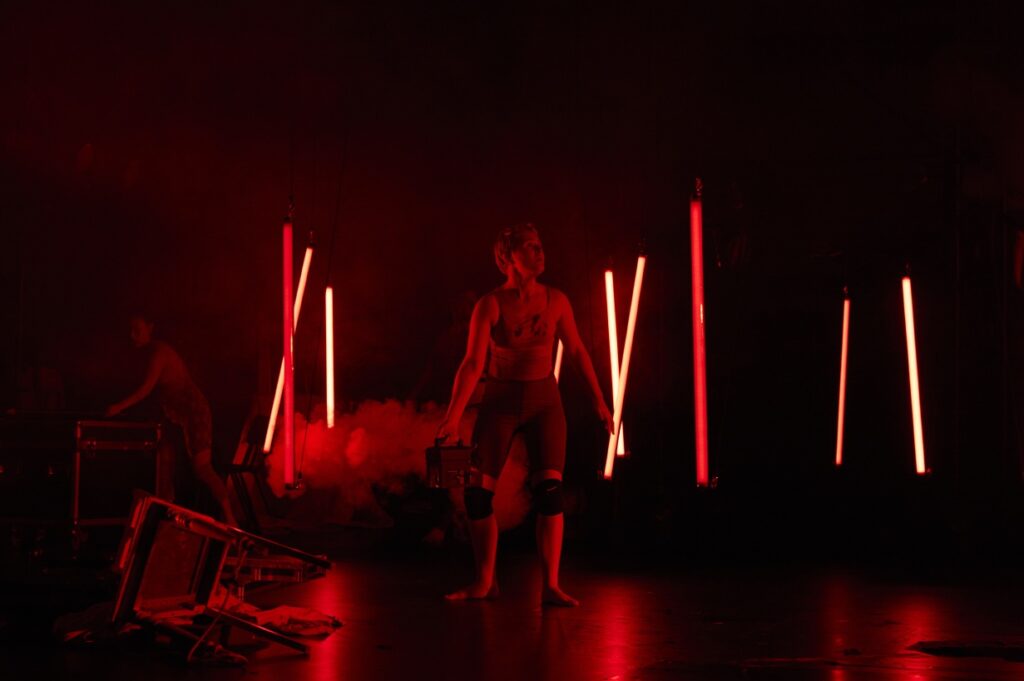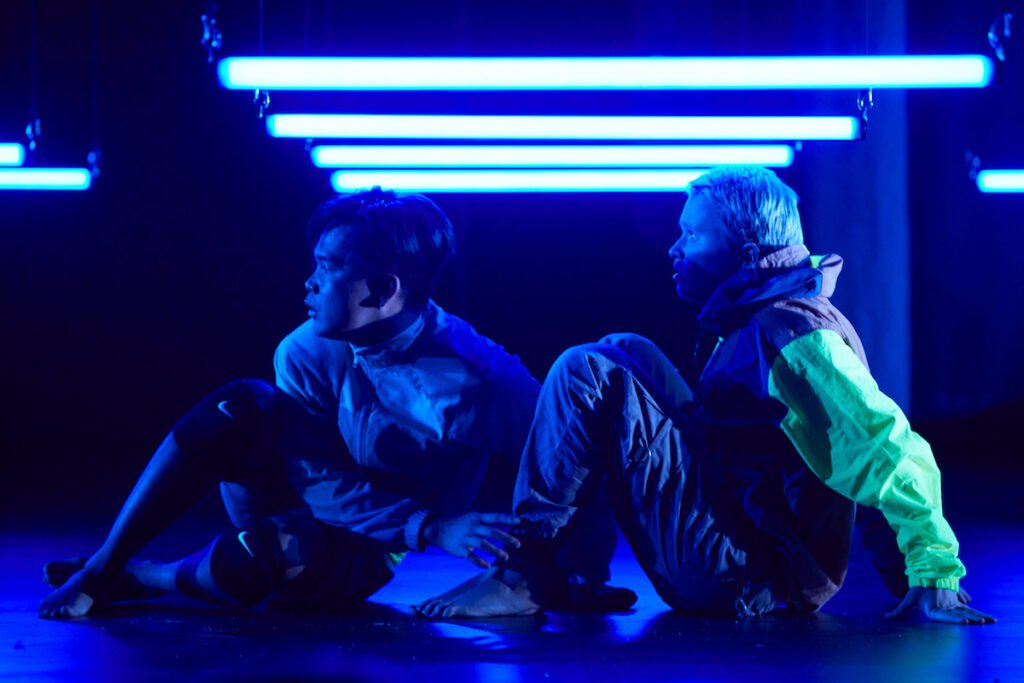News
12 Sep 2019
Lord of the Flies

Subscribe to CX E-News
THEATRE
by Cat Strom.
Photo Credits: Zan Wimberley
At first sight, Sydney Theatre Company’s latest production of Lord of the Flies offers a naked rehearsal stage under harsh fluorescent light, but then stagecraft takes over and the stage is transformed.
William Golding’s Lord of the Flies is a 20th century masterpiece, as relevant today as it was on its publication in 1954. In it, Golding created an enduring modern myth, examining humanity’s terrifying capacity for self-destruction.
Adapted for the stage by Nigel Williams in 1996, that script is now being directed by Sydney Theatre Company artistic director Kip Williams.
Williams and set designer Elizabeth Gadsby construct the world of the play through a bare stage; STC-branded storage trunks and unadorned scaffolding stand in for various set pieces. It doesn’t look like much at all until Alexander Berlage’s lighting comes into play.
“We wanted to create a space that felt like a theatre at its core, so the set design is quite minimalist at first appearance,” explained Alex. “We then had to work out how to plunge the audience into a sense of theatricality without them realising they’re being led into this dark world.
“It was Elizabeth Gadsby who came up with the idea of using the fluorescent tubes of the theatre to create different landscapes. The original idea was to have fluoros that flew down from the grid and could divide space in different ways whilst also changing colour and creating a variety of shapes.
“The design team then had to work out how to realise this idea and Corinne Fish, Head Electrician for the production, eventually discovered the Astera Titan Tubes. These smart LED tube lights feature programmable and customisable effects, TruColor calibration and most importantly, they are battery powered and offer wireless control.”

Chameleon Touring Systems provided a kinetic lighting system of 40 wireless Titan Tubes and 72 new motors. “This gave us the ability to use the Titan Tubes on individual winches so each could be flown in to various different heights,” said Alex.
“They could also be unclipped by the actors which was integral to the brief. They have been amazing; we use them as eye candy, scene setting and also illumination.
“They have RGBA so they have great colour control and colour mixing plus they have a long battery life span. We have them on a six hour setting, which allows us to have full control and full use over them and then they can be charged during dinner breaks.”
The Titan Tubes can be arranged into arrays and shapes that describe the physical and emotional landscape of the story.
The production is a prime example of set design and lighting blending into each other as the Titan Tubes are part of the set. They change position and colour to suggest the ocean, the tropical forest, and blood red to highlight the violence.
“They are a part of the set that just happen to light up,” added Alex. “It seems that as we integrate new technologies into theatre, the lines become blurred as to what is light and what is set, even what is automation.
“Normally winches or anything flying would fall to the mech department but in this production it fell to the lighting department.”
The show was programmed by two programmers; Blake Garner programming the conventional fixtures in the rig on an ETC Gio and Corinne Fish programming the Titan Tubes and winches on an ETC EOS Ti.
The winches are run through the EOS software. Corrine controlled the heights of the winches using the beam parameter, setting a range of beam palettes for the winches at various heights.
A less glamourous but more typical theatrical rig of ETC Source 4s, LED Lustres, Selecon Pacifics, 1.2K, 2K and 5K Fresnels, 2K PCs and PAR 64s added powerful side and top light. Added to that were Ayrton Wildsun TCs which Alex described as an incredible fixture similar to a moving head HMI.
“They really are punchy and have such an incredible white,” he said. “I also had eight Martin MAC Viper Performances for specials to pick out certain moments in the piece. We had to find ways to shoot around all the wires but also give the appearance at the beginning of the show of a brightly lit theatre.”
There is a moment in the piece where the cast rip up the floor to create a fire pit and Alex chose ShowPRO Hex 16 LED Bars to provide the illusion of fire, along with a couple of smoke machines and a fan.
“We weren’t looking for a replication of a realistic looking fire but rather the illusion of a heightened psychological fire,” added Alex. “We then had six Martin Atomic 3000 strobes in the grid to emulate lightning strikes and one in the fire pit to give that initial burst of a fire starting.”
The cast do quite a bit of running around with Look Solutions Tiny Foggers, a sturdy unit that Alex says delivers a really nice fog. “I’m always surprised by how much smoke manages to pop out of them,” he laughed. “We also have some Magnum 1800 smoke machines.”
The images produced by this production of Lord of the Flies are quite unlike anything seen before on a theatre stage in Australia. Alex’s lighting is eerie, scary yet quite exquisite. It sets the tone and paints the landscape in the most abstract manner, subtly suggesting shape, form and foreboding.

CX Magazine – Sept 2019 Entertainment technology news and issues for Australia and New Zealand – in print and free online www.cxnetwork.com.au
© CX Media
Lead image – Cast member Daniel Monks
Subscribe
Published monthly since 1991, our famous AV industry magazine is free for download or pay for print. Subscribers also receive CX News, our free weekly email with the latest industry news and jobs.






















